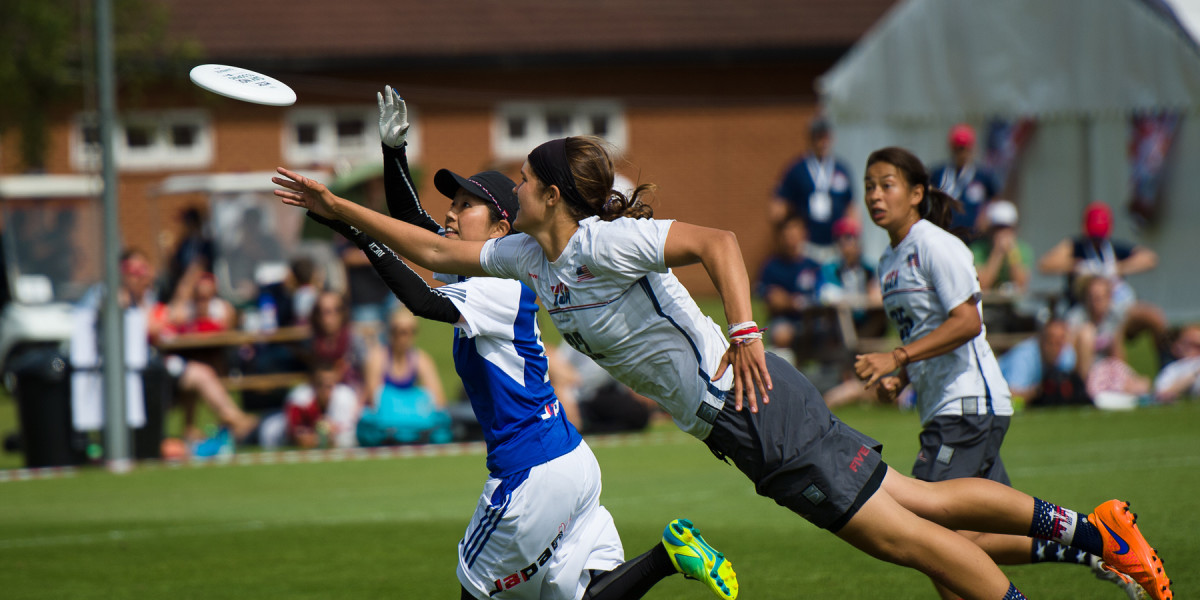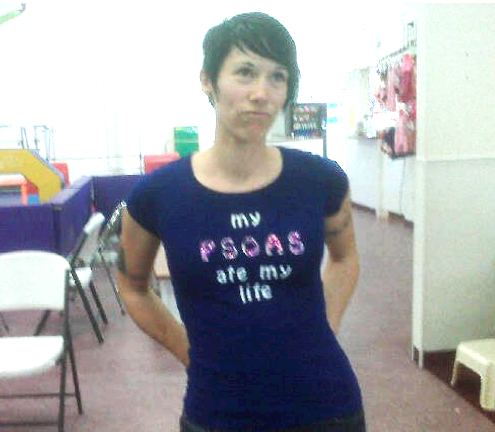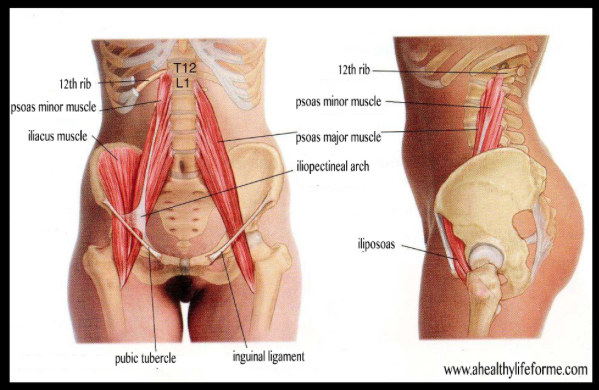 Kevin Leclaire - UltiPhotos.com
Kevin Leclaire - UltiPhotos.com
An ex-girlfriend of mine, also a dancer, made me a t-shirt for my birthday one year.

While that sounds fairly dramatic to me now, at the time it felt fairly accurate. The psoas, whether underactive or weak or tight or all three, can cause problems for people, and perhaps more so for ultimate players than other kinds of athletes. But it might not be the villain that many make it out to be…
So what is the psoas?
The psoas major is a deep core muscle that originates at the lumbar spine/last thoracic vertebrae and attaches to the lesser trochanter of the femur. There’s a lot of other musculature in the same area, and we often speak of the “iliopsoas” as a unit, which includes the psoas major/iliacus muscles.

The psoas has several jobs: it flexes the hip, affects pelvic tilt, flexes the trunk laterally and also assists in lateral rotation of the hip. If that all sounds like Greek (or if you’re just a muscle geek like me), check out this cool interactive visual. If you don’t like interacting and just want to see the different functions, here’s the YouTube version.
So yes, the posts has some big tasks to perform! Hip flexion and the ability to extend out of that flexion is incredibly important in ultimate (running, jumping, defending), as is hip rotation (cutting, changing direction, pivoting and lunging) and lateral flexion (throwing, especially forehand, and reaching out for catches).
Why does the psoas not perform optimally for so many of us?
- Most of us sit a lot, probably too much. This means we don’t get enough hip movement in our daily life, and the psoas sits around all day not getting used.
- Tight and weak hip and core musculature can cause strain on the psoas, or reduce its ability to function well. In other words, the psoas isn’t getting used because other parts of your body are trying to do the work. Many ultimate players have stiffness and pain in other muscles used in hip flexion – these muscles becoming too dominant, leaving the psoas out in the cold.
How does psoas trouble play out in everyday life?
- Less powerful glutes (underpowered running)
- Overactive hamstrings (higher risk of injury)
- Anterior pelvic tilt (low back strain)
- Reduced ability to flex/extend the hip (less knee drive/slower first sprinting steps)
- Too much workload on other hip flexors (cramping and strains)
- Decreased pelvic stability (higher risk of groin/adductor injury, sports hernia)
- Psoas imbalance right to left from lunging/throwing (low back pain, core tightness/inflexibility)
Now before we all freak out and go running for the nearest sharp object to stick into our deep abdominal region, let’s recognize that your psoas does not exist in a vacuum.
You can’t “release the psoas” and have all your problems disappear – it’s important to address the surrounding musculature as well. There’s some debate over whether the psoas can actually be safely massaged at all, given its proximity to the spine, major blood vessels and sensitive internal organs. A tight/weak/underactive psoas can be significant contributor towards pain and dysfunction, but it’s very possible that smoothing out overactive hip flexors and increasing your hip mobility will allow the psoas to function more normally without any smashing of tissues.
Want to explore some psoas/core work and see if it helps?
Again, here’s my caveat: test and retest, and make sure you address other issues (like glute/hamstring weakness or really tight quads) alongside these approaches.
Use broad pressure (lacrosse ball is better than fingers), and stay below a 2-3 on a 10-point discomfort scale. We’re trying to target the whole abdominal region, not just the psoas.
If you’re on the field, you can this stretch without a box – raising the same-side arm overhead helps deepen the stretch!
Activation and Strength Exercises
First of all, walk around more. Take a short break every half hour and step awaaaay from the computer!
Doing one or two of these exercises daily can make a big difference in your strength and symmetry!
You psoas can eat your life, but only if you let it… :)











Comments Policy: At Skyd, we value all legitimate contributions to the discussion of ultimate. However, please ensure your input is respectful. Hateful, slanderous, or disrespectful comments will be deleted. For grammatical, factual, and typographic errors, instead of leaving a comment, please e-mail our editors directly at editors [at] skydmagazine.com.